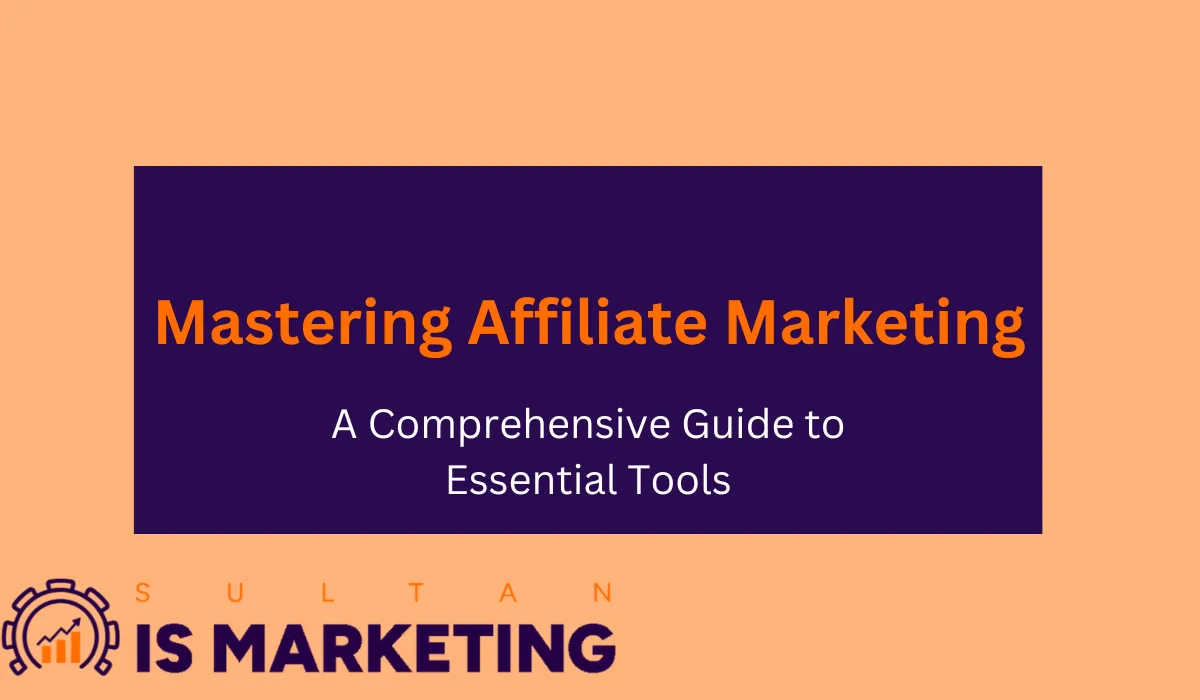100 Social Media Content Creation Tips: Transform Your Affiliate Marketing Strategy!
Introduction
Struggling to create engaging content on social media? You're not alone. Many affiliate marketers find this challenging. But there's good news! We've compiled a comprehensive list of 100 tips to help you excel in social media content creation...
Understanding Social Media Content Creation
The Essentials of Social Media Content
What is Social Media Content Creation?
It's the art of crafting material specifically for social media platforms. This includes anything from tweets to Instagram stories...
Why is Quality Content Crucial for Affiliate Marketers?
Quality content is the backbone of effective affiliate marketing. It's how you attract, engage, and convert your audience into loyal customers...
The Basics of Great Content
Crafting Your Content Strategy
Identifying Your Target Audience
Knowing your audience is crucial. You must understand their needs, interests, and pain points to create content that resonates...
Setting Clear Goals
What do you want to achieve with your content? Setting clear, measurable goals is essential for tracking your success...
Content Creation Tips
100 Social Media Content Creation Tips
- Use High-Quality Images: Always choose clear, high-resolution images. They make your content look professional and appealing.
- Embrace Brand Colors: Consistently use your brand colors in your visuals to build recognition and trust.
- Incorporate Infographics: Infographics are great for summarizing information in an engaging, visual way.
- Experiment with Filters and Effects: Don't be afraid to use filters and effects to make your images stand out.
- Utilize Graphs and Charts: When sharing data, use graphs and charts. They make complex information easier to digest.
- Create Themed Content: Develop visual themes for different types of posts. This helps in creating a cohesive look.
- Use Memes Wisely: Memes can be a fun way to engage your audience, but make sure they align with your brand voice.
- Balance Text and Imagery: Ensure there's a good balance between text and imagery in your posts.
- Leverage User-Generated Content: Share content created by your audience. It boosts engagement and trust.
- Add Captions to Images: Sometimes, a caption can add context and increase the impact of your visuals.
- Play with Typography: Different fonts can convey different moods and messages. Use typography to your advantage.
- Show Behind-the-Scenes Content: Giving a glimpse behind the scenes makes your brand more relatable.
- Create Visual How-To Guides: Step-by-step visuals or diagrams can be very engaging and informative.
- Post Before-and-After Comparisons: These are particularly effective in showing transformations or results.
- Highlight Customer Testimonials: Use visuals to showcase customer testimonials or reviews.
- Create Visual Quotes: Inspirational or thought-provoking quotes in a visually appealing format can be very engaging.
- Make Use of White Space: Don't overcrowd your visuals. White space can make your content more readable.
- Incorporate Animations or GIFs: Animations and GIFs can make your posts more dynamic and attention-grabbing.
- Storytelling through Images: Create a series of images that tell a story related to your brand or product.
- Consistent Visual Branding: Ensure all your visuals adhere to a consistent style and branding for better brand recall.
- Craft Attention-Grabbing Headlines: Your headline is the first thing people see. Make it intriguing and relevant.
- Use Active Voice: Active voice makes your writing more direct and dynamic. It captures attention and keeps your audience engaged.
- Keep It Concise: Social media users have short attention spans. Get to the point quickly.
- Tell a Story: Stories resonate with people. Share anecdotes or customer stories to make your point.
- Use Emotionally Charged Language: Emotional appeal can be a powerful tool.Use language that evokes joy, excitement, or curiosity.
- Incorporate Questions: Asking questions engages the reader and encourages them to think about your content.
- Utilize the Power of Numbers and Lists: People love lists and numbers. They offer clear, digestible information.
- Add a Personal Touch: Personalize your content. Speak directly to the reader as if you’re having a conversation.
- Include a Clear Call-to-Action (CTA): Tell your audience exactly what you want them to do next.
- Highlight Benefits, Not Just Features: Focus on how your product or service can solve problems or improve lives.
- Use Testimonials and Reviews: Incorporate customer testimonials into your copy to build trust and credibility.
- Create a Sense of Urgency: Phrases like "limited time offer" encourage quick responses.
- Use Simple Language: Avoid jargon or complex language. Keep it simple and understandable.
- Incorporate Humor: When appropriate, humor can make your content more relatable and shareable.
- Use Persuasive Language: Words like "because," "imagine," and "free" can be very persuasive.
- Leverage the Fear of Missing Out (FOMO): Create content that makes readers afraid they'll miss out if they don’t act.
- Be Authentic: Authenticity builds trust. Be true to your brand voice and values.
- Use Powerful Adjectives: Descriptive adjectives can make your copy more vivid and engaging.
- Optimize for SEO: Use relevant keywords naturally in your content to improve search visibility.
- Show, Don’t Just Tell: Use specific examples and real-life scenarios to illustrate your points.
- Start with a Hook: Grab your audience's attention in the first few seconds with something intriguing or visually appealing.
- Keep it Short and Sweet: Attention spans are short. Aim for videos that are concise yet impactful.
- Tell a Story: People love stories. Use storytelling to make your videos more engaging and memorable.
- Use Subtitles: Many people watch videos without sound. Adding subtitles ensures your message gets across.
- Focus on Quality Over Quantity: A well-made, engaging video is worth more than several low-quality ones.
- Include a Call-to-Action: Always guide your viewers on what to do next, whether it's visiting a website or leaving a comment.
- Leverage Live Videos: Live streaming can create a sense of immediacy and connection with your audience.
- Show Behind-the-Scenes: Give your audience a glimpse of what goes on behind the scenes in your business or life.
- Utilize User-Generated Content: Share videos made by your customers to create authenticity and trust.
- Experiment with Different Formats: Try tutorials, interviews, product demos, or Q&A sessions to see what resonates with your audience.
- Optimize for Mobile Viewing: Ensure your videos look good on mobile devices, where most social media browsing occurs.
- Incorporate Branding: Include your logo or brand colors, but do so subtly.
- Use Annotations and Graphics: Enhance your videos with helpful or entertaining graphics.
- Highlight Customer Testimonials: Video testimonials can be more convincing than written ones.
- Create How-To Videos: Teach your audience something valuable related to your niche.
- Collaborate with Influencers: Partner with influencers to expand your reach and add credibility.
- Focus on Authenticity: Authentic, relatable videos often perform better than overly polished ones.
- Use SEO Techniques: Optimize your video titles, descriptions, and tags for search engines.
- Analyze Performance: Use analytics to understand what works and refine your video strategy.
- Encourage Engagement: Ask viewers to like, comment, and share your videos to boost visibility.
- Research Relevant Hashtags: Find hashtags that are popular and relevant to your content and audience.
- Use a Mix of Broad and Niche Hashtags: Broad hashtags increase visibility, while niche hashtags target specific audiences.
- Create a Branded Hashtag: Develop a unique hashtag for your brand or campaign to build recognition.
- Limit Hashtag Use: Overuse can look spammy. Stick to a reasonable number (around 5-10) per post.
- Check Hashtag Popularity: Use tools to check the popularity and relevance of your chosen hashtags.
- Avoid Banned or Spammy Hashtags: Some hashtags are associated with spam. Avoid using these to maintain credibility.
- Incorporate Hashtags Naturally: Place hashtags where they make sense, either in the post or at the end.
- Use Hashtags in Stories: Don’t forget to use hashtags in your Instagram or Facebook stories for additional reach.
- Analyze Hashtag Performance: Use analytics tools to see which hashtags are driving engagement and adjust accordingly.
- Participate in Trending Hashtags: Join in on trending topics relevant to your brand to increase visibility.
- Use Local Hashtags for Local Business: If you’re targeting a local audience, use location-based hashtags.
- Refresh Hashtags Regularly: Avoid using the same hashtags repeatedly. Keep updating your hashtag strategy.
- Follow Hashtag Trends: Stay updated with trending hashtags in your industry and use them strategically.
- Create Hashtags for Events: If you’re hosting or participating in an event, create a specific hashtag for it.
- Hashtag Placement Matters: Experiment with placing hashtags in the caption or the first comment to see what works best.
- Capitalize Each Word in Multi-Word Hashtags: This makes them easier to read, e.g., #SocialMediaTips.
- Use Hashtags in Bio and Profile: Incorporate relevant hashtags in your social media bio for increased visibility.
- Engage with Posts Under Target Hashtags: Interact with content under the hashtags you use to build community.
- Monitor Competitors’ Hashtags: See what hashtags your competitors are using effectively and learn from them.
- Avoid Overly Generic Hashtags: While they might have a high post count, they can be too broad and less effective for targeting.
- Set a Content Calendar: Plan your posts in advance using a content calendar to maintain regularity and consistency.
- Understand the Best Times to Post: Research and identify when your audience is most active online to maximize engagement.
- Use Scheduling Tools: Utilize social media scheduling tools like Buffer or Hootsuite to automate posting.
- Maintain a Consistent Voice and Branding: Ensure all your posts reflect your brand’s voice and image consistently.
- Post Regularly but Don’t Spam: Find the right balance in posting frequency to keep your audience engaged without overwhelming them.
- Plan for Seasonal Content: Align your content with holidays, seasons, and events relevant to your audience.
- Respond to Comments and Messages Promptly: Engagement isn’t just about posting; it’s also about interacting with your audience.
- Regularly Update Your Strategy: Stay adaptable and update your content strategy based on performance and audience feedback.
- Reuse and Recycle High-Performing Content: Don’t be afraid to repurpose content that has performed well in the past.
- Keep an Eye on Trends: Stay up-to-date with current trends and incorporate them into your content plan.
- Use Content Themes: Having weekly or monthly themes can help in planning and creating consistent content.
- Leverage Time-Sensitive Content: Post content that’s relevant to current events or trends to keep your feed fresh and relevant.
- Balance Different Types of Content: Mix educational, entertaining, and promotional content to keep your audience interested.
- Announce When You’ll Be Posting New Content: Let your audience know when to expect new content from you.
- Stay Consistent Across Different Platforms: Your posting schedule and style should be coherent across all social media platforms.
- Track and Analyze Your Posting Patterns: Regularly review which posting schedules work best for engagement and adjust accordingly.
- Automate Repetitive Tasks: Automate tasks like post scheduling to free up time for creativity and engagement.
- Batch Create Content: Create and store a backlog of content to ensure you always have something to post.
- Notify Followers of Upcoming Posts: Use stories or quick posts to build anticipation for upcoming content.
- Stay Committed to Your Schedule: Consistency is key. Stick to your schedule as closely as possible to keep your audience engaged.
Implementing the Tips
From Tips to Action
How to Implement These Tips in Your Strategy
Putting these tips into action doesn't have to be overwhelming. Start small, experiment, and see what works best for your brand...
Tracking and Measuring Success
To know if your efforts are paying off, you need to track your progress. Use analytics to measure the impact of your content...
Conclusion
Remember, the key to successful affiliate marketing is quality content. Start implementing these tips today and watch your online presence grow. Your journey to becoming a social media content wizard starts now!










